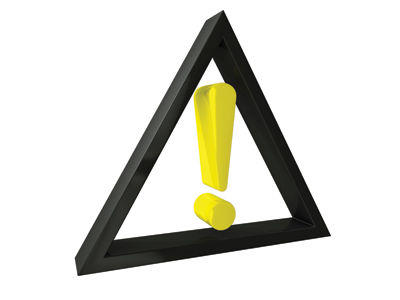The International Conference on Harmonisation (ICH) Q3D guideline aims to provide a risk-management process to assess and control elemental impurities in drug products.1
As a consequence, the way in which pharmaceutical manufacturers and their suppliers will be required to test active pharmaceutical ingredients (APIs), raw materials and excipients will change considerably.
Although the final guidance provides a platform for manufacturers to develop a risk-based control strategy, it also presents many challenges. The industry is debating whether the new guidance is creating unnecessary barriers to product innovation — is it simply looking for problems that don’t exist? Even so, with deadlines on the horizon, manufacturers now need to look towards the introduction of technologies and analytical testing methods that are able to meet new requirements.
Fergus Hall, PhD, Section Manager, Pharmaceutical Chemistry at Eurofins BioPharma Product Testing, shares his insight on the impact of emerging guidance and how techniques such as Inductively Coupled Plasma Mass Spectrometry (ICP-MS) are going to prove critical in overcoming the potential hurdles.
Introducing ICH Q3D
Elemental impurities in drug products can occur from several potential sources during the manufacturing process. These may include residual metal catalysts that were added intentionally in syntheses, as well as impurities derived from interactions with processing equipment, container closure systems, processing aids, excipients, water, solvents, inorganic reagents and other organic materials. As elemental impurities provide no therapeutic advantages to patients, their levels in drug products need to be controlled to acceptable limits.
The ICH Q3D sets out a global policy to limit metal impurities in drug products and ingredients. Applicable to both new finished drug products entering the market and new products containing existing drug products, manufacturers will need to do a detailed risk assessment of their materials to comply. In June 2016, the guideline was adopted by The Committee for Medicinal Products for Human Use (CHMP) for new marketing applications.
For existing products, it’s due to come into effect in December 2017. The United States Pharmacopoeia (USP) has also harmonised its regulations to an extent by introducing corresponding chapters, 232 and 233. These are set to come into effect in January 2018.2
The US Food and Drug Administration (FDA) and the European Medicines Agency (EMA) are both encouraging manufacturers to comply with the standards as early as possible, confirming that they represent significant improvements compared with existing approaches.3
The guidelines incorporate three parts: the evaluation of toxicity data to identify potential elemental impurities; the establishment of a Permitted Daily Exposure (PDE) for each element of toxicological concern; and the application of a risk-based approach to control elemental impurities in drug products. The guideline lists 24 different elements with corresponding PDEs recommended for consideration in the risk assessment. The PDE defines the amount of metal contaminant in a daily dosage that is not likely to cause an adverse event during a lifetime exposure. In ICH Q3D, the PDE is defined for specific elements depending upon their toxicity. A formula is provided as a guideline for calculating the PDE if an element is not listed in the guidance.
Analytical testing challenges

The new guidelines have presented the industry with a number of obstacles to overcome. Perhaps most significant are the complexities surrounding the introduction of analytical testing techniques that can meet the requirements of identifying specific limits for individual elements. Although analytical testing for elemental impurities is clearly an important aspect, it is not within the scope of ICH Q3D. The guidance simply states that pharmacopoeial procedures or suitable validated alternative procedures for determining levels of elemental impurities should be used, when feasible.
In the past, methodologies for elemental impurity analysis have largely relied on outdated, time-consuming, non-specific and non-quantitative wet chemical ‘heavy metals’ limit tests. This methodology will no longer be acceptable unless it has been validated for each element. The level of PDEs for the elements of concern will require the broader introduction of more sensitive and specific analytical technologies.
As an alternative approach, ICP-MS screening offers the sensitivity, accuracy and elemental specificity that will equip sponsors to confirm that their materials meet the new compliance criteria. Not only is this technique more sensitive than traditional approaches, it will enable more samples to be processed in a shorter amount of time.
In terms of a testing methodology, it is recommended as a starting point that manufacturers undertake a sample screen. Although the metals listed by the different pharmacopoeias are harmonised, the limits vary slightly. The USP currently has the lowest limits, so it is sensible for companies to use its guidelines as a benchmark. In undertaking analyses, it is recommended that three different batches or three different samples are screened for 68 different elements.
If nothing is identified as being higher than the permitted limits, then manufacturers can use these findings as part of its risk assessment. It is then recommended that the four most common heavy metal catalysts used in the manufacturing process of the APIs are validated. In most cases, this will be lead (Pb), arsenic (As), cadmium (Cd) and mercury (Hg), as well as any other intentionally introduced catalysts and any elements that have been identified as a potential concern. This process will save considerable time and should be repeated across batches on an ongoing basis.
Is outsourcing the most viable option?
The process of validating for elemental impurities by ICP-MS is a relatively new concept for pharmaceutical manufacturers, and understanding this process will be a critical step in ensuring pharmaceutical products are compliant. It is also well recognised that bringing all products into compliance will be a lengthy and expensive task.
Although some manufacturers may choose to implement an ICP-MS solution, the expense of procuring the instrumentation for many, not to mention the high cost of maintaining in-house expertise to operate the equipment and interpret the data, will simply be too much.
Many manufacturers will likely see value in working with an outsourcing partner that has already developed methodologies to meet ICH Q3D requirements. Working with this type of partner will enable manufacturers to benefit from expertise that spans the entire process, including method development, drafting of a method validation protocol and the actual execution of the validation.
Final thought
The pharmaceutical industry does not have time to waste and the ICH Q3D guidelines should already be being considered in the development of new drug products and the assessment of existing products. Although it may be viable for some manufacturers to implement new analytical testing methods within their organisations, the majority of small to mid-sized companies will undoubtedly see the greatest value in working with reputable providers using a tried-and-tested approach to assess elemental impurities.
Given the close proximity to the deadline, outsourced services will likely see a huge increase in demand during the coming months. It is important that manufacturers start planning now to ensure fast turnaround on method validations in advance of the deadlines.
References
- www.ich.org/fileadmin/Public_Web_Site/ICH_Products/Guidelines/Quality/Q3D/Q3D_Step_4.pdf.
- www.usp.org/usp-nf/key-issues/elemental-impurities.
- www.fda.gov/downloads/drugs/guidances/ucm371025.pdf.




